In today's video, I take you with me to the exhibition Historybit – Stories of Computers, organized by Davide and Alberto Fornasiero of Studio FBP in Cerro Maggiore (Italy). It's an unmissable opportunity to explore the evolution of technology through an extraordinary collection of vintage computers and vintage computing machines. In this journey, we analyze the main sections of the exhibition, from the first mechanical calculation tools to the iconic computers of the eighties and nineties.

Mechanical, electromechanical and electronic calculation machines
The Historybit exhibition begins with a section dedicated to the precursor tools of the personal computer: calculators. We find mechanical devices such as the famous Facit, Comptometer and Addometer, which with gears and levers allowed complex calculations to be carried out. There is also an ancient abacus, which demonstrates how ancient the need for man to find calculation aids was, dating back to 2000 BC. In addition, we see the first electromechanical calculators by Olivetti, the result of the work of Natale Cappellaro, and the subsequent electronic calculators, capable of performing more complex and faster mathematical operations.
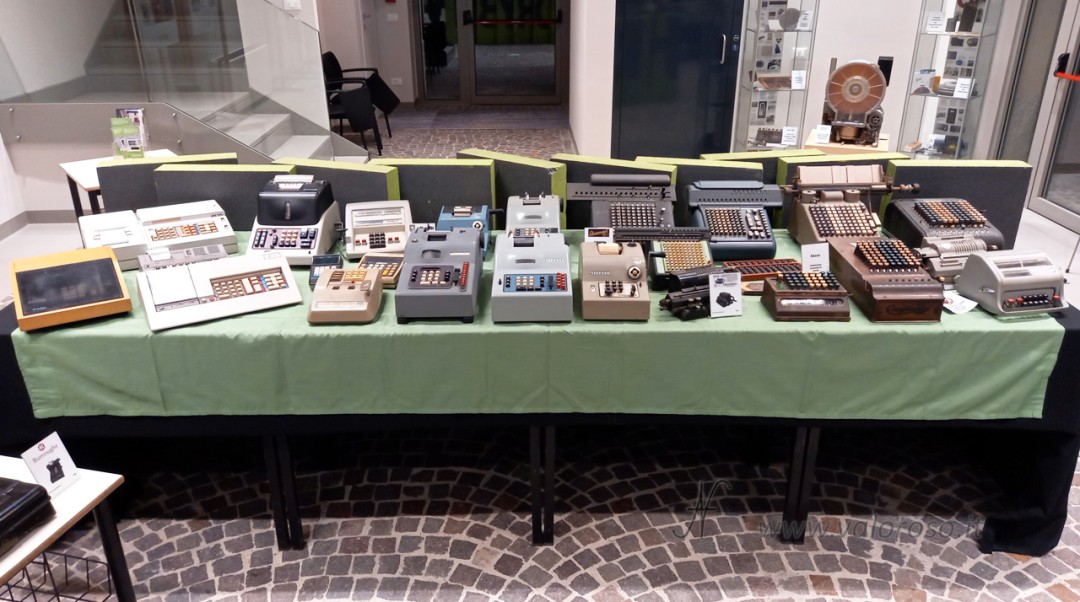
Also billers and teleprinters in Historybit
Alongside calculators, we find Burroughs mechanical invoicing, essential tools for business accounting in the early twentieth century, and teleprinters, devices that allowed the transmission of messages at a distance, paving the way for modern telecommunications.
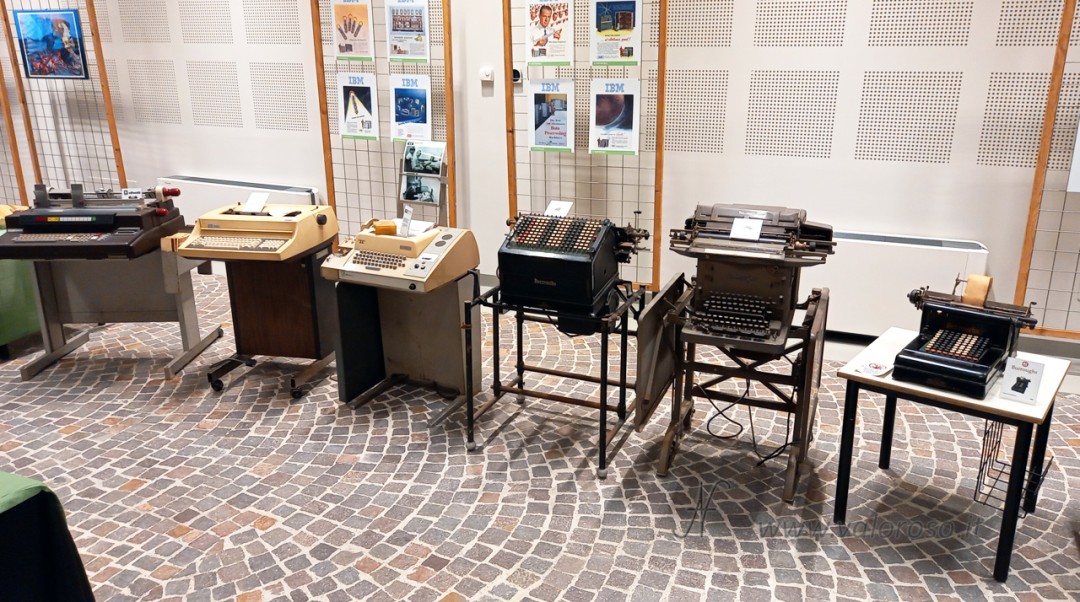
Valve and punched card computer parts
Historybit also shows us tube and punch card computer components. A notable example is a large hard disk (part of an IBM System/36), which highlights how much space and power were needed to store data that would take up a fraction of memory today. This section discusses the footprint and complexity of early computers.
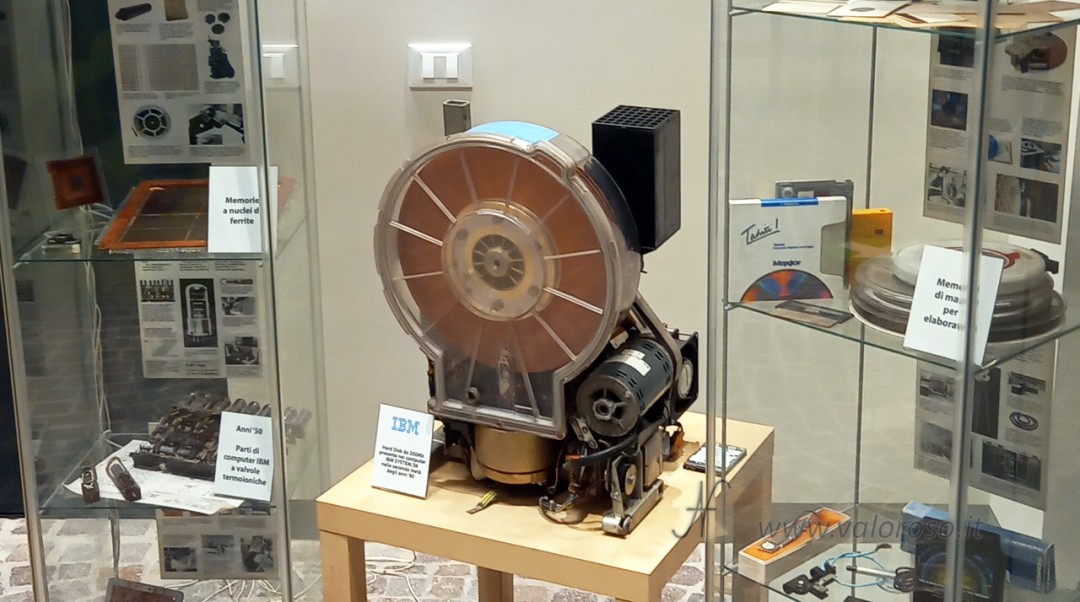
Historybit section dedicated to computers in the 70s
The exhibition then takes us to the computers of the seventies, culminating with the Apple IIe, one of the first home personal computers, with a simple interface and a compact design for the time. This iconic model represented the future of computing, bringing computing closer to more and more people.

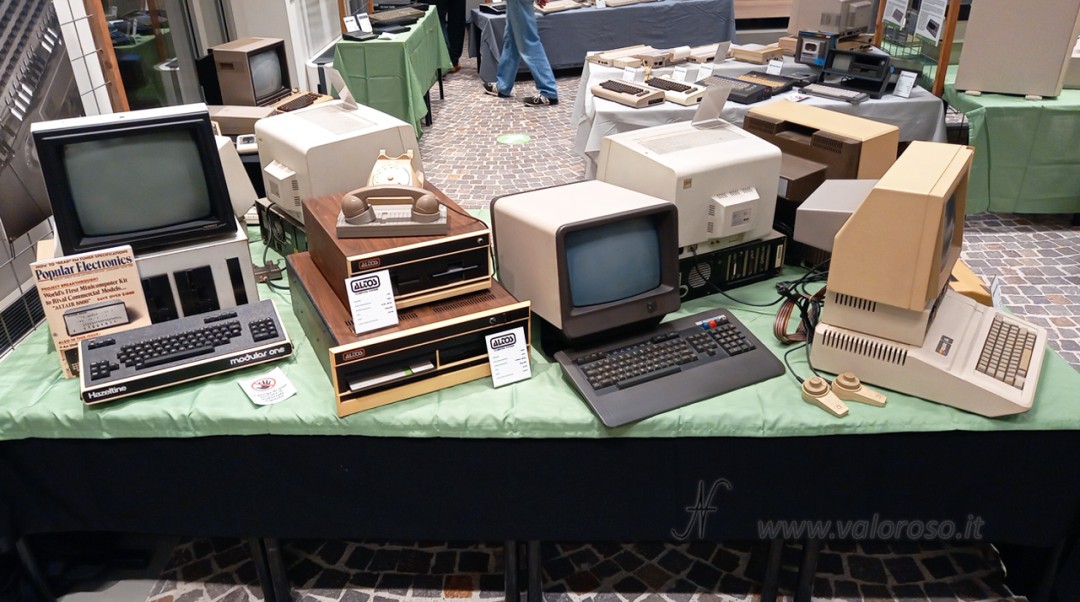
80s computers
For the 1980s, Historybit exhibits historical models such as the Apple III and IBM XT, which brought computing to businesses and small offices. IBM set technical standards that influenced subsequent generations of PCs. The personal computer IBM PS/1, on the other hand, was designed for home use, compact and cheaper than business models.
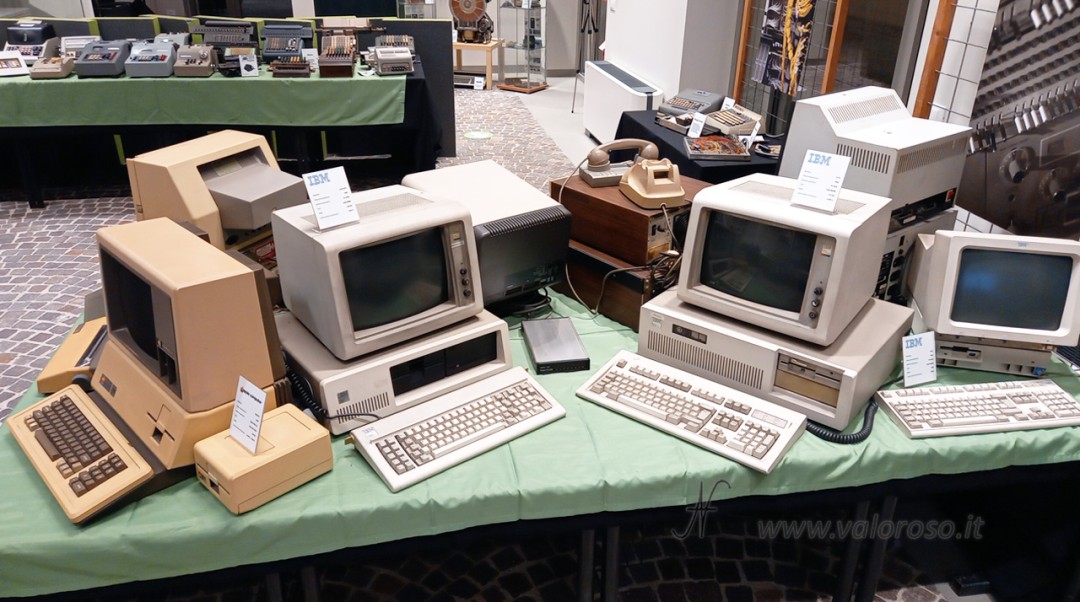
80s gaming rig: Commodore 64
One of the tables in the Historybit exhibition is dedicated to the Commodore 64, one of the best-selling computers in history. We also see accessories such as the original CRT monitor, the 1541 floppy drive, the datassette for loading programs on cassette and the MPS 801 printer. This setup is typical of the eighties and takes us back to the golden age of home computers.
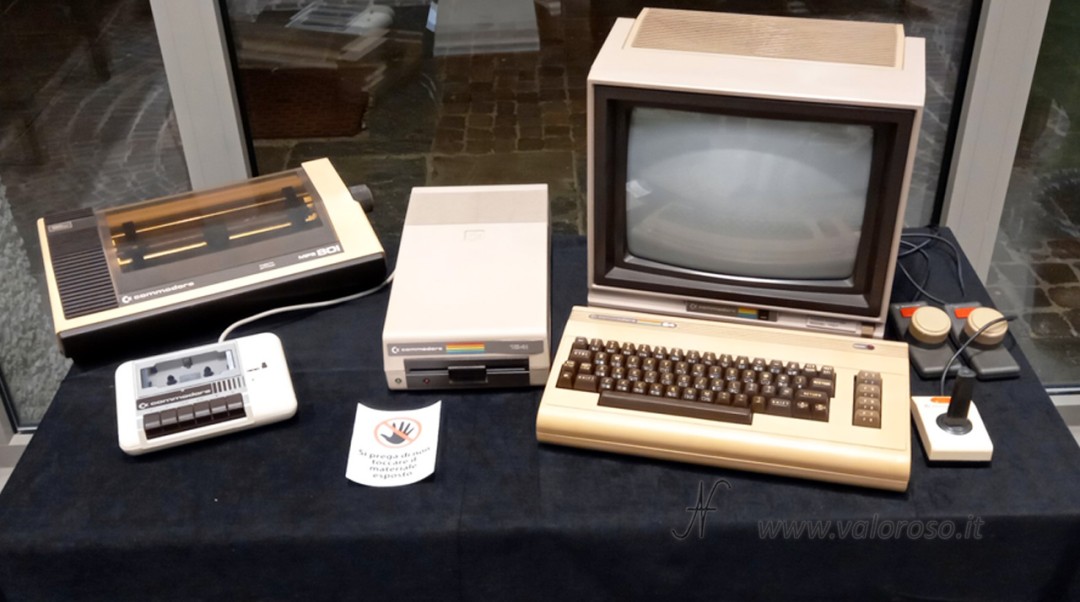
The 8-bit Commodores could not be missing in Historybit
Another area is reserved for 8-bit Commodore models. The exhibition includes: Commodore 64 (version breadbin + 64C), VIC-20, Commodore 128, 128D, Commodore 16, Plus/4, SX-64 (which, as you may remember, still lacks the keyboard). This range illustrates the evolution of the Commodore series, offering a wide variety of choices for users of the time.
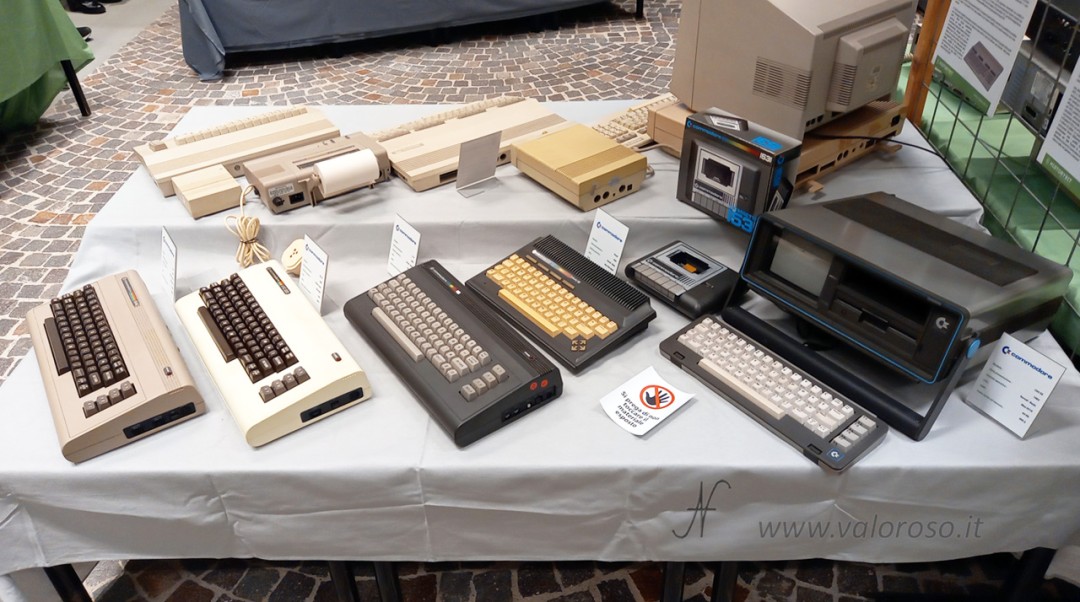
Space dedicated to Sinclairs
Another table is dedicated to Sinclair computers. They are British computers, symbols of the European market, which have found diffusion thanks to their affordability and simplicity. We find the ZX81, the famous Spectrum with its 48K versions, ZX Spectrum +2 and the QL.

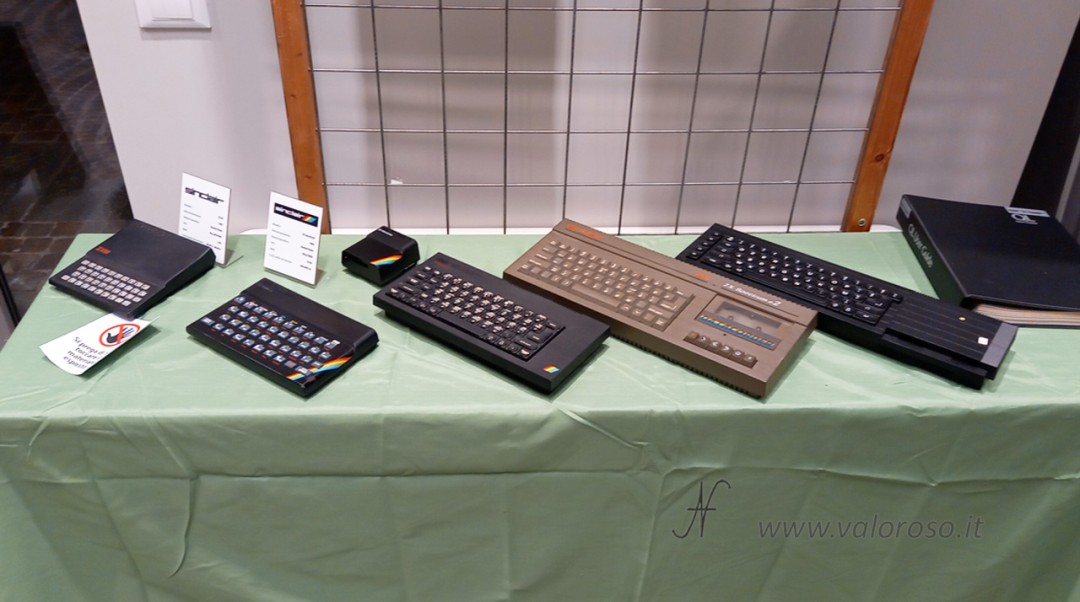
Video Editing at Historybit – Computer Stories
The section dedicated to video editing takes us into the world of graphics and digital creativity of the eighties and nineties. Amiga and Silicon Graphics computers, along with cameras and mixers, demonstrate how the technology of the time was used for professional and home video production. In particular, we see Amiga, Silicon Graphics and Draco. In addition, in the video we can admire an Amiga Warp Station: a custom version, created ad hoc by Studio FBP, for video editing.
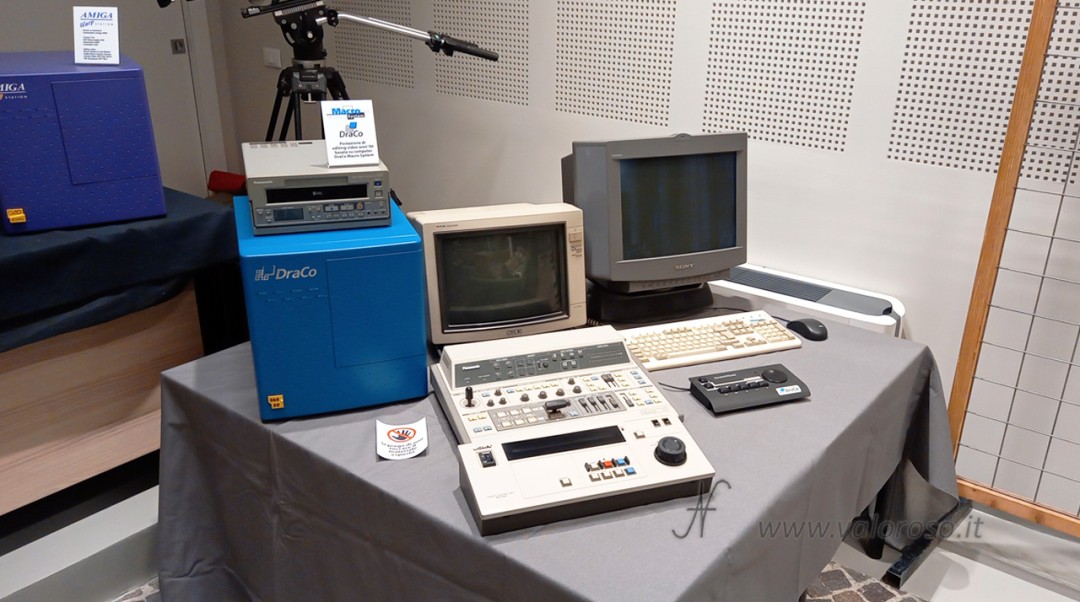
Computers of other brands
In addition to big names such as IBM, Commodore and Sinclair, Historybit dedicates a space to lesser-known but fundamental brands in the history of computing. We find computers from Texas Instruments, Olivetti, Atari and Toshiba, each with unique technical specifications and applications, from the office to education to music.
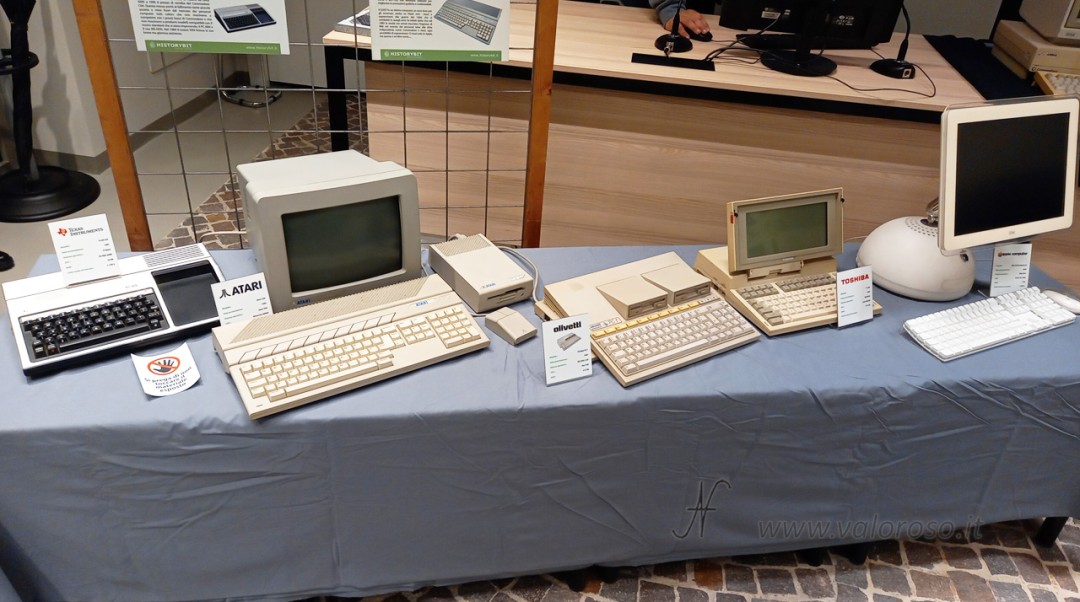
Replica of the Amiga Family poster... real!
Finally, a treat for Amiga enthusiasts: a reproduction of the famous "Amiga Family" with almost all models, except for the Amiga 4000 Tower. This composition allows you to fully appreciate the evolution of the Amiga, an iconic brand for graphics and video game enthusiasts.
Here are the models in the photo, starting from the bottom left: Amiga 1200, Amiga 2000, Amiga 3000 Tower.

In the middle row: Amiga 600, Amiga 1000 (with the cover signed by the technicians), Amiga CD32, Amiga 4000, Amiga CDTV.
In the right row: Amiga 500, Amiga 3000 and an empty space, reserved for the Amiga 4000 Tower.
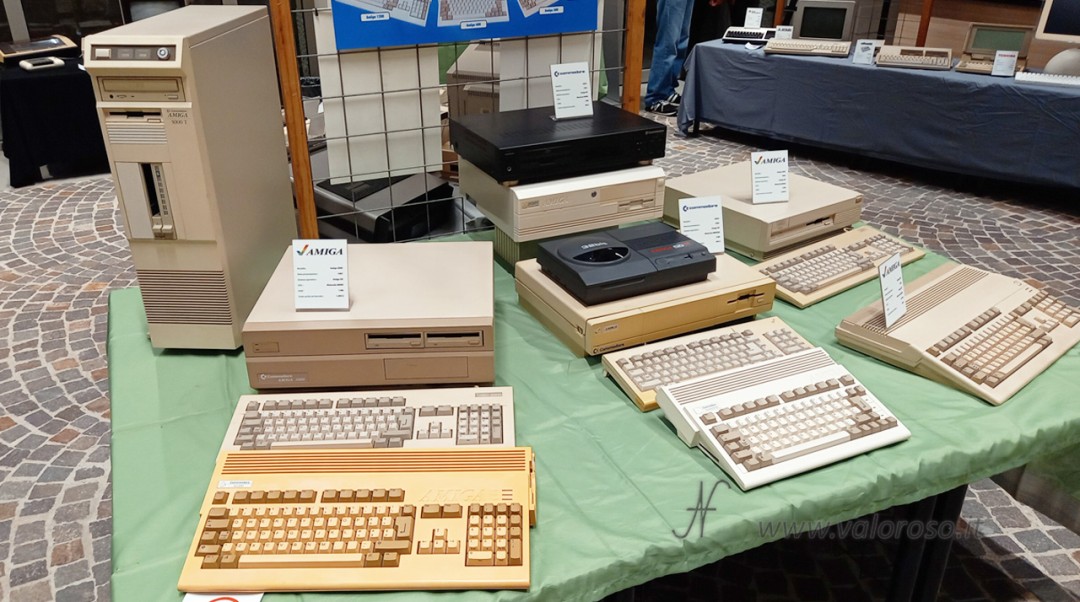
Let's stay in touch!
I hope you enjoyed the images and the video of the exhibition Historybit – Computer Stories. To continue exploring content about computers and vintage electronics, subscribe to my YouTube channel (@ValorosoIT)! 🔔 I am also present on TikTok, Instagram, Facebook and Threads.